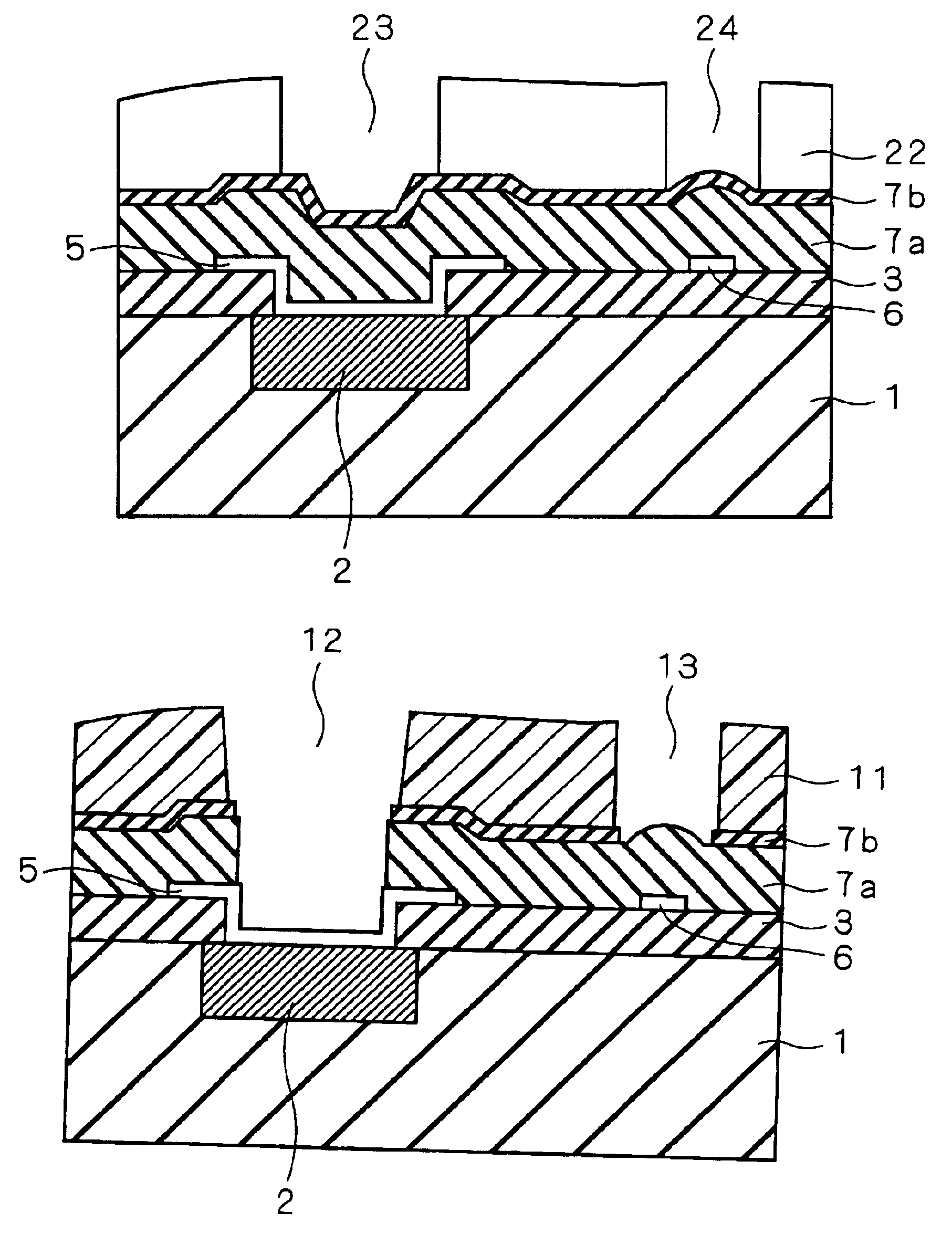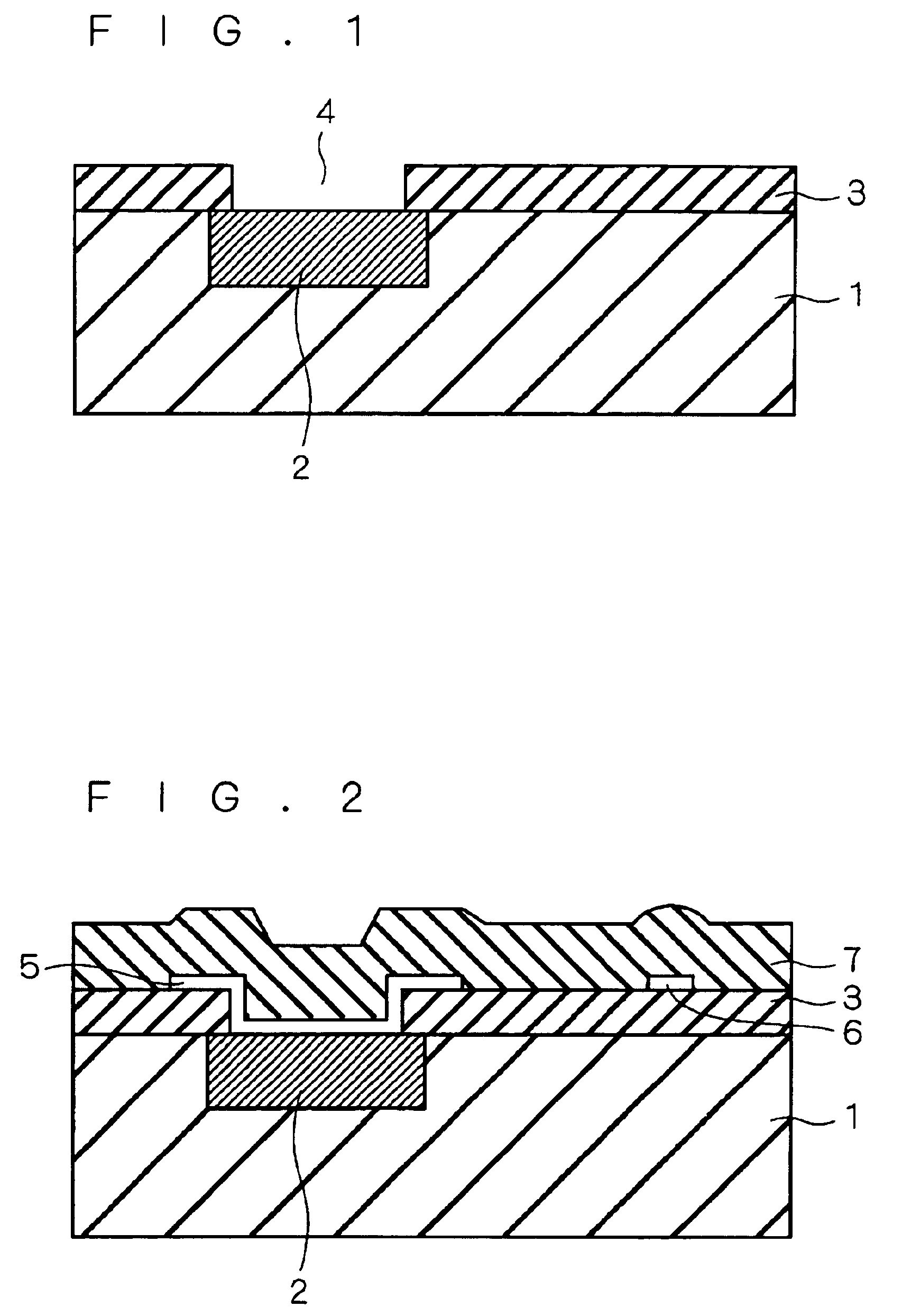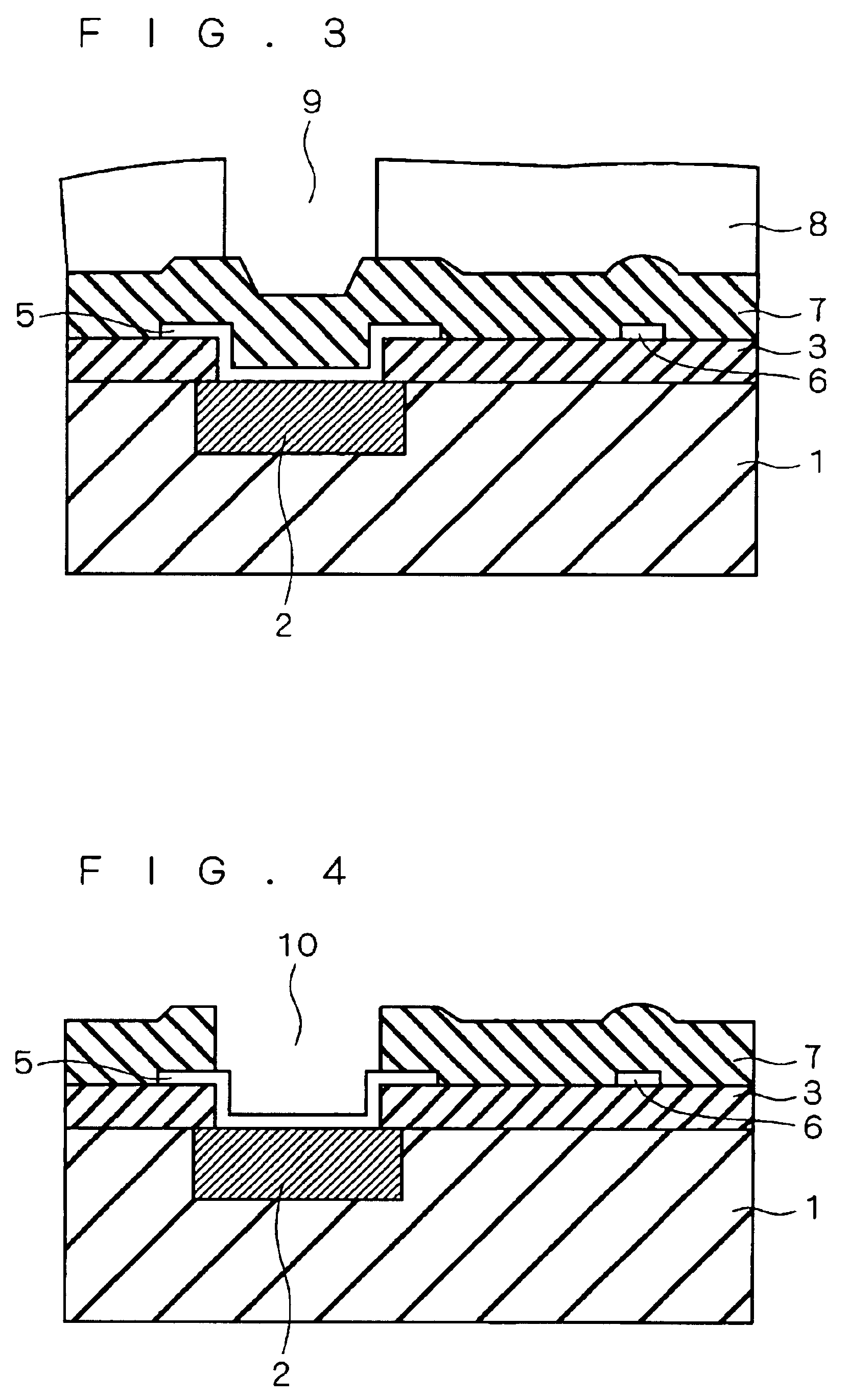Flip chip mounting method of forming a solder bump on a chip pad that is exposed through an opening formed in a polyimide film that includes utilizing underfill to bond the chip to a substrate
- Summary
- Abstract
- Description
- Claims
- Application Information
AI Technical Summary
Benefits of technology
Problems solved by technology
Method used
Image
Examples
first preferred embodiment
[0025]A first preferred embodiment is directed to the case of using a single-layer passivation film. A flip chip mounting method according to the present embodiment will specifically be described referring to sectional views showing manufacturing steps.
[0026]FIG. 1 illustrates part of the surface of a semiconductor chip before or after being separated from a wafer. As shown, a copper interconnect line 2 is provided in the surface of an interlayer insulation film 1, and an insulation film 3 is formed to cover the interlayer insulation film 1 and copper interconnect line 2. Next, part of the insulation film 3 covering the copper interconnect line 2 is removed to form a recess 4 in the surface of the insulation film 3, so that the copper interconnect line 2 is exposed from the bottom of the recess 4.
[0027]Next, as shown in FIG. 2, a pad 5 made of aluminum or the like is formed to cover the bottom and side surfaces of the recess 4 and part of the upper surface of the insulation film 3 n...
second preferred embodiment
[0042]A second preferred embodiment is directed to the case of using a two-layered passivation film (in which a nitride film and an oxide film are stacked). A flip chip mounting method according to the present embodiment will specifically be described referring to sectional views showing manufacturing steps. The steps are the same as those in the first preferred embodiment as far as the structure shown in FIG. 2 is obtained, repeated explanation of which is thus omitted here. In the present embodiment, the first layer of the passivation film is a silicon oxide film 7a.
[0043]Next, as shown in FIG. 12, a silicon nitride film 7b is formed as the second layer of the passivation film by the CVD method or the like to cover the silicon oxide film 7a. Here, the silicon nitride film 7b functions as moisture barrier for the copper interconnect line 2 and the like.
[0044]Next, as shown in FIG. 13, a resist 22 is coated to cover the silicon nitride film 7b, and exposure and development is perfo...
third preferred embodiment
[0051]A third preferred embodiment is also directed to the case of using a two-layered passivation film (in which a nitride film and an oxide film are stacked), however, the passivation film is removed with different steps from those in the second preferred embodiment. A flip chip mounting method according to the present embodiment will specifically be described referring to sectional views showing manufacturing steps.
[0052]First, a semiconductor chip having the structure as described in the first preferred embodiment as shown in FIG. 2 is formed, and the silicon nitride film 7b is formed over the silicon oxide film 7a as described in the second preferred embodiment referring to FIG. 12.
[0053]Next, as shown in FIG. 18, a resist 31 is coated to cover the silicon nitride film 7b, and exposure and development is performed to form an opening 32 in the surface of the resist 31 above the pad 5. The silicon nitride film 7b is exposed from the bottom surface of the opening 32.
[0054]Next, an...
PUM
 Login to View More
Login to View More Abstract
Description
Claims
Application Information
 Login to View More
Login to View More - R&D
- Intellectual Property
- Life Sciences
- Materials
- Tech Scout
- Unparalleled Data Quality
- Higher Quality Content
- 60% Fewer Hallucinations
Browse by: Latest US Patents, China's latest patents, Technical Efficacy Thesaurus, Application Domain, Technology Topic, Popular Technical Reports.
© 2025 PatSnap. All rights reserved.Legal|Privacy policy|Modern Slavery Act Transparency Statement|Sitemap|About US| Contact US: help@patsnap.com



